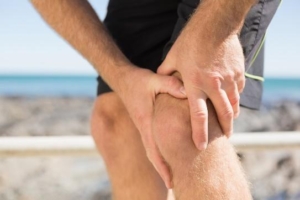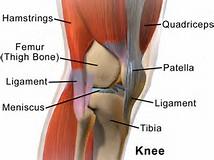What is Runners Knee, Jumpers Knee?
Runner’s knee and jumper’s knee are broad terms used when discussing anterior knee pain or patellofemoral pain. These conditions are related to overuse. Squatting, lunging, running and jumping cause repetitive stress to this area creating unwanted inflammation and pain. In addition to the repetitive stresses, muscular imbalances, muscular tightness or weakness can be a contributing factor to these symptoms.

The knee is the largest and one of the most complex joints in the human body. The joint and its components function together to provide stability and power for activities of daily living and athletic movements. The gliding motion of the patella is stabilized with additional soft tissue structures such as ligaments, muscles, tendons, synovial tissue and the fat pad beneath the patella. Muscles are connected to the bone by tendons. Muscles and tendons provide the motion of the joint. The quadriceps (thigh muscle) is connected to the patella (knee cap) by the quadriceps tendon. After crossing over the patella, the patellar tendon inserts onto the tibial tubercle (upper portion of your shin). These tendons promote knee extension – straightening of the knee.

However, any of these structures can be injured or damaged requiring treatment as easy as rest and therapy to as complex as surgery to correct. Regardless, either treatment will typically allow a full return to activity or sports without additional complications.
Signs and Symptoms
Signs and Symptoms of these conditions are most commonly associated with a dull ache overlying the anterior or front of the knee. Typically begins gradually and as activity continues symptoms worsen. As they worsen the dull ache can become sharp. They can become debilitating especially with repetitive climbing, squatting, jumping and lunging. Bouts of instability may occur from pain and weakness. Instability, cracking, popping, grinding, stiffness with prolonged sitting and swelling can exist with these conditions.
Diagnosis
Diagnosis will be determined through a thorough history and physical examination by a trained sports medicine and orthopedic knee specialist. Examination will consist of palpating the knee complex for pain and a visual examination for deformities. The clinician will check both active and passive range of motion. Specific manual tests will be performed by the specialist to determine if inflammation exists, the amount of weakness, instability and other possible factors causing symptoms. Once the initial diagnosis has been made, radiological examinations may need to take place for further assessment. X-rays of the knee complex may be ordered to evaluate patellar alignment and also to determine if any other bony conditions exist such as fracture or loose body. If additional concerns from initial exam and assessment are present an MRI (3 dimensional picture) may be ordered to assist in determining the final diagnosis and prognosis.
Treatment
Treatment includes rest, ice, compression, anti-inflammatory or narcotics medications, decrease or change of activity level, weight loss, physical therapy, therapeutic taping and bracing.
Rehabilitation
Rehabilitation is highly recommended. Your sports medicine physician will determine a personalized treatment program that fits your needs. Following the initial onset of signs and symptoms, the initial goal is to reduce pain, increase mobility and range of motion. At home and through physical therapy, the use of ice, modalities and specific range of motion and strengthening exercises will be performed. Pain and anti-inflammatory medication may also be prescribed for additional benefit. Total recovery varies for the condition and the patient. Typically, many will see improvement in symptoms within the first 2 weeks following the beginning of conservative treatments.
